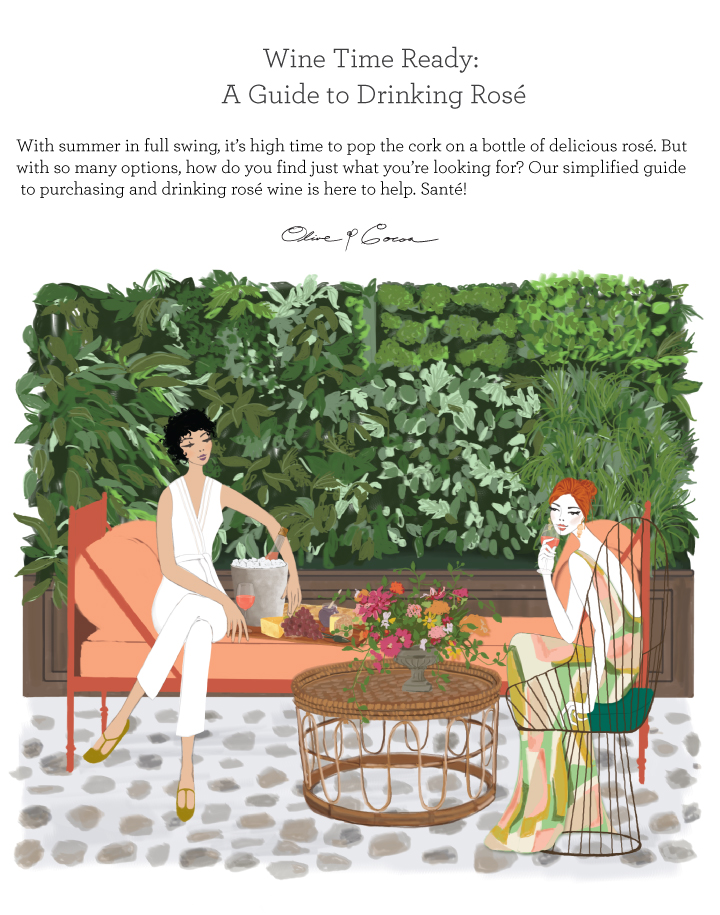

What is it?
Many people mistakenly assume that rosé is a blend of red and white grapes. While these lighter blends do exist, they are typically sweeter and not as complex as a well-crafted rosé. Most rosé is made when red wine grapes are crushed and left to macerate with their skins for a short period of time, giving the wine a soft pink hue. The darker the rosé, the longer the grapes fermented.

Fruity vs. Dry
If you've passed on rosé before because you think it is too sweet, summer is the perfect time to give it another chance. Rosé from Provence and Loire, France is light and dry with lots of minerality. If you're looking for something fruitier, domestic rosés made from Grenache, Zinfandel, or Sangiovese grapes are a good bet.

Serving
Rosé should always be served cold-46-57 degrees Fahrenheit to be exact. Note this is a bit warmer than the average refrigerator, which is around 35 degrees Fahrenheit. To get rosé to its ideal serving temperature, we recommend taking it out of the fridge about twenty minutes prior to opening and keeping cool on ice. Our Vintage Red Truck is great for chilling multiple bottles of rosé at once for the group, and our Simon Pearce Woodbury Chiller & Hartland Flutes are perfect for a more intimate affair.

Pairing with Food
Rosé is a food-friendly and ultra-versatile wine, making it a popular choice for your summer barbecue. It goes especially well with soft cheeses and raw shellfish, and pairs nicely with cooked meats including roasted pork and grilled chicken. Picnics are also perfect for rosé! Pair a bottle with the gourmet goodies in our Farmhouse Gourmet Pantry, which includes a plethora of rosé- friendly foods such as farmhouse cheese and sea salt crackers.
